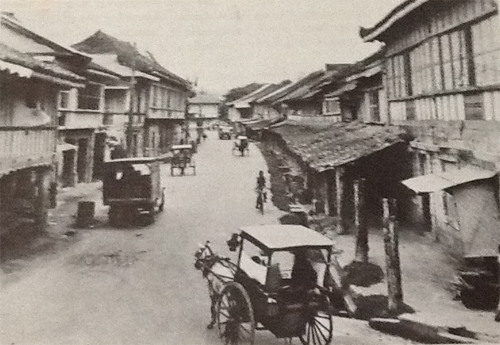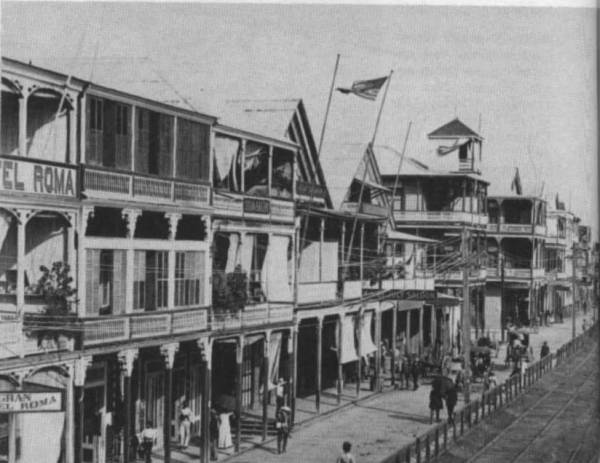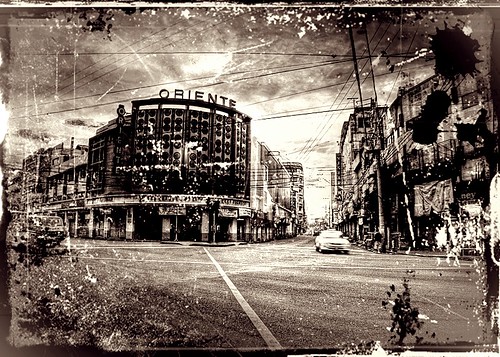San Juan Bautista Parish Church, once Cebu’s most opulent church
DIONISIO Alo stood seething with anger as authorities tore down the magnificent San Juan Bautista Parish Church in Parian in the late 1870s.
“His heart bled with every stone that was removed and all he could do was bite his lips causing them to also bleed,” said Ang Sugbo sa Karaang Panahon: An Annotated Translation of the 1935 History of Cebu by Fe Susan Go.
Alo, who was capitan of the Parian gremio, was so angry at the destruction that he unknowingly crushed the golden handle of his baston.
The destruction of what had been described in various historical sources as the most magnificent church in Cebu was the end of centuries of struggle between the local mestizo community and the Spanish friars who wanted control over the structure.
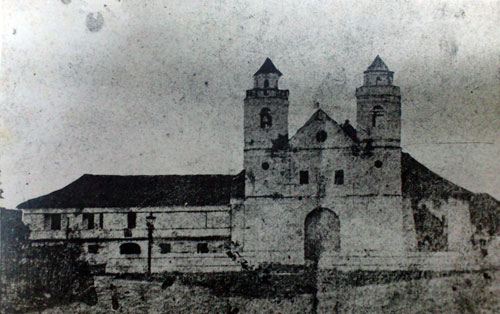
The Parian church, according to Go’s translation submitted to the University of San Carlos as her masteral thesis in history, “has never been surpassed by any other church that has been built in Cebu, such as the Cathedral, the Seminary and San Nicolas.” It was built in 1602.
What remains on the site today, the San Juan Bautista chapel, is but a faint reminder of an opulent past.
“The church was made of stone blocks, plastered together in a mixture of lime and the sap of the lawat tree. The roofs were made of tiles, and the lumber used was molave, balayong and naga. The paraphernalia used in the mass was made purely of gold, the pews were carved by a sculptor of the Parian, the altars were covered with stone slabs with money and gold inlaid, and the church bells were big and loud. The tolling of these bells was so loud that it could be heard as far as Hilotungan ang the town of Talisay,” Go said in her thesis.
“The Augustinian friars upon seeing the magnificence of the church of the Parian, got envious, and employed every shrewd means they could think of to take over the Parian church,” the thesis said.
Fr. Rafael Vasquez, a Parianon, however, fought back and kept the friars at bay.
Go said in one of her footnotes that Augustinian Fr. Santos Gomez Marañon filed a petition “to have the Parian parish supressed and incorporated into the Cathedral.”
Through the years, however, the rivalry with Spanish friars continued with succeeding priests and capitans of the Parian gremio.
During the time of Don Pedro Rubi as Parian captain, the bishop ordered that masses be held at the church only on Sundays.
During the time of Don Maximo Borromeo as captain, the bishop “removed the right of the Visayas priests to officiate mass in the Parian Church.”
“In retaliation the residents of the Parian decided to make use of the school across from the church and converted it into a chapel where the parish priest of Parian could officiate the mass.”
In 1875, Dionisio Alo, known as Capitan Isyo, became capitan of the Parian gremio. With the San Juan Bautista fiesta in June approaching, Capitan Isyo called for a meeting to discuss preparations. The fiesta was a big affair in the area with most Parian residents spending “as much as three thousand pesos” for the celebration.
Capitan Isyo also wanted to discuss who would replace their parish priest, the Ilonggo Fr. Anselmo “Pari Imoy” Albanceña, who died in December 1874. The replacement would be celebrating the fiesta mass.
Fr. Tomas de la Concepcion, the parish priest of the cathedral, told the group “to request the bishop to appoint a white priest.” De la Concepcion said there was no Filipino priest capable of being named to the post.
Capitan Isyo, however, strongly disagreed and shouted at a cabeza de barangay who agreed with the suggestion.
“At that instance, a quarrel broke out between the two. While Capitan Isyo used his prerogatives as head of the mestizo gremio, Padre Tomas also made use of his power as representative of the Bishop in order to force Capitan Isyo to yield and accept (a) white priest as their parish and spiritual guide.”
The heated and bitter exchange ended with the two deciding not to hold a mass for the fiesta or even holding any celebrations.
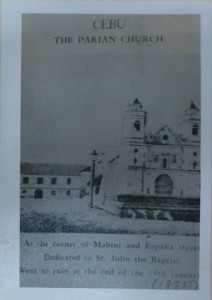
Fr. Tomas kept a grudge against Parian and “boasted to his priestly friends, especially the friars, that he was obsessed with the complete destruction of the Parian church.”
When Fr. Tomas reported the incident to the bishop, including Capitan Isyo’s declaration that he would rather have the church destroyed than have a white priest in it, the bishop felt insulted.
On June 24, 1875, the bishop forbade the parish priest from saying mass in the Parian church. The community’s fiesta celebration was also overseen by the Cathedral parish priest. Capitan Isyo could not do anything and his enemies made sure he would keep his post so that they could exact their revenge. They told residents that the capitan was to blame for what happened in Parian.
The bishop then ordered a Spanish engineer to check the durability of the Parian church. The engineer later informed the governor that the materials used to build the church were weak and the structure, including the stone wall that surrounded it, should be torn down.
While Ang Sugbo Sa Karaang Panahon listed the destruction of the church as having occurred in 1875-1876, Go said “the actual destruction of the church seems to have taken place in late 1878 or 1879.
According to information printed on a photograph found at the Cebuano Studies Center in the University of San Carlos, “the convent of the church was spared and was used later during the American regime as a public library and a fire station.”
from mycebu.ph
“His heart bled with every stone that was removed and all he could do was bite his lips causing them to also bleed,” said Ang Sugbo sa Karaang Panahon: An Annotated Translation of the 1935 History of Cebu by Fe Susan Go.
Alo, who was capitan of the Parian gremio, was so angry at the destruction that he unknowingly crushed the golden handle of his baston.
The destruction of what had been described in various historical sources as the most magnificent church in Cebu was the end of centuries of struggle between the local mestizo community and the Spanish friars who wanted control over the structure.

The San Juan Bautista Parish Church in the Parian district is described as having been the most magnificent church in Cebu. (PHOTO USED WITH PERMISSION FROM THE CEBUANO STUDIES CENTER OF USC)
What remains on the site today, the San Juan Bautista chapel, is but a faint reminder of an opulent past.
“The church was made of stone blocks, plastered together in a mixture of lime and the sap of the lawat tree. The roofs were made of tiles, and the lumber used was molave, balayong and naga. The paraphernalia used in the mass was made purely of gold, the pews were carved by a sculptor of the Parian, the altars were covered with stone slabs with money and gold inlaid, and the church bells were big and loud. The tolling of these bells was so loud that it could be heard as far as Hilotungan ang the town of Talisay,” Go said in her thesis.
“The Augustinian friars upon seeing the magnificence of the church of the Parian, got envious, and employed every shrewd means they could think of to take over the Parian church,” the thesis said.
Fr. Rafael Vasquez, a Parianon, however, fought back and kept the friars at bay.
Go said in one of her footnotes that Augustinian Fr. Santos Gomez Marañon filed a petition “to have the Parian parish supressed and incorporated into the Cathedral.”
Rivalry
Go said, “Many reasons for this request were given, but it definitely had the earmarks of a direct challenge against the dominance of the Chinese mestizo community of Parian and their elaborate church, which far outshone the cathedral.”Through the years, however, the rivalry with Spanish friars continued with succeeding priests and capitans of the Parian gremio.
During the time of Don Pedro Rubi as Parian captain, the bishop ordered that masses be held at the church only on Sundays.
During the time of Don Maximo Borromeo as captain, the bishop “removed the right of the Visayas priests to officiate mass in the Parian Church.”
“In retaliation the residents of the Parian decided to make use of the school across from the church and converted it into a chapel where the parish priest of Parian could officiate the mass.”
In 1875, Dionisio Alo, known as Capitan Isyo, became capitan of the Parian gremio. With the San Juan Bautista fiesta in June approaching, Capitan Isyo called for a meeting to discuss preparations. The fiesta was a big affair in the area with most Parian residents spending “as much as three thousand pesos” for the celebration.
Capitan Isyo also wanted to discuss who would replace their parish priest, the Ilonggo Fr. Anselmo “Pari Imoy” Albanceña, who died in December 1874. The replacement would be celebrating the fiesta mass.
Fr. Tomas de la Concepcion, the parish priest of the cathedral, told the group “to request the bishop to appoint a white priest.” De la Concepcion said there was no Filipino priest capable of being named to the post.
Capitan Isyo, however, strongly disagreed and shouted at a cabeza de barangay who agreed with the suggestion.
“At that instance, a quarrel broke out between the two. While Capitan Isyo used his prerogatives as head of the mestizo gremio, Padre Tomas also made use of his power as representative of the Bishop in order to force Capitan Isyo to yield and accept (a) white priest as their parish and spiritual guide.”
The heated and bitter exchange ended with the two deciding not to hold a mass for the fiesta or even holding any celebrations.
Grudge
Followers of Capitan Isyo feared he would be excommunicated and tried to change his mind but the nationalist community leader just told them, “I would prefer that the church be destroyed rather than have a friar in it.”
Parian Church, according to "Ang Sugbo sa Karaang Panahon", “has never been surpassed by any other church that has been built in Cebu, such as the Cathedral, the Seminary and San Nicolas.” (PHOTO USED WITH PERMISSION FROM THE CEBUANO STUDIES CENTER)
When Fr. Tomas reported the incident to the bishop, including Capitan Isyo’s declaration that he would rather have the church destroyed than have a white priest in it, the bishop felt insulted.
On June 24, 1875, the bishop forbade the parish priest from saying mass in the Parian church. The community’s fiesta celebration was also overseen by the Cathedral parish priest. Capitan Isyo could not do anything and his enemies made sure he would keep his post so that they could exact their revenge. They told residents that the capitan was to blame for what happened in Parian.
The bishop then ordered a Spanish engineer to check the durability of the Parian church. The engineer later informed the governor that the materials used to build the church were weak and the structure, including the stone wall that surrounded it, should be torn down.
Date of destruction
The governor of Cebu then ordered the destruction of the church. He also ordered the bishop to take possession of everything inside the church, including its statues and bells.While Ang Sugbo Sa Karaang Panahon listed the destruction of the church as having occurred in 1875-1876, Go said “the actual destruction of the church seems to have taken place in late 1878 or 1879.
According to information printed on a photograph found at the Cebuano Studies Center in the University of San Carlos, “the convent of the church was spared and was used later during the American regime as a public library and a fire station.”
from mycebu.ph




















